 "Hangul" means "great words" in Korean. It was invented by and
proclaimed as Korea's official and national alphabet in 1446 by order of
the Korean "I"(or "Ri") Dynasty (
"Hangul" means "great words" in Korean. It was invented by and
proclaimed as Korea's official and national alphabet in 1446 by order of
the Korean "I"(or "Ri") Dynasty ( ) King Se-jong (
) King Se-jong ( ). It replaced Chinese ideograms which
had been Korea's means of writing till then.
). It replaced Chinese ideograms which
had been Korea's means of writing till then.
The "Hangul" is a phonogramic alphabet consisting of 10 vowels and 14
consonants (at first it was called "Eonmun" ( ) and consisted of 28 phonetic
words).
) and consisted of 28 phonetic
words).
In looking at the brief history of the making of the "Hangul", I was
intrigued by the shortness of the time it took in making it (3 years). How
could the project of making a Korean alphabet, ordered by King Se-jong,
complete its mission in just 3 years?
There are many countries which have made their own alphabet (ex: Paspa's new Mongolian alphabet) but
in almost all cases they have referred to and based it upon an already
existing alphabet.
Brief diagram of the propagation of characters:
- Chinese ideogramic character = Khitanese character (Mongol ;10th Century) = Jurchinese
character (Manchuria ;12th C)
= Western Xia character (Turkistan ;10th C)
= "Chenom" character (Vietnam ;14th C)
- Alam phonogramic alphabet = Hebrew alphabet
= Arabic alphabet
= Soghudic alphabet = Turkish alphabet = Uigulian alphabet = Mongolian alphabet = Manchurian alphabet
- Fenykian phonogramic alphabet = Greek = Latin
= Kilil (Russian)
The "Hangul" is commonly said to have been created without any model. So
the Koreans jumped from writing mainly in Chinese ideograms to writing
mainly in Korean phonograms. And it took them just 3 years to create a
well-organized phonogramic alphabet without any model... I found this to be
doubtful, so I sought to find if there was alphabet around Korea which
could have served as a model.
After a while, I did find an alphabet used nearby Korea which could have
been used as a model for the Korean alphabet: the "Ahilu" ( ) alphabet. The "Ahilu"
alphabet is an ancient Japanese alphabet ("Jindai Moji"
) alphabet. The "Ahilu"
alphabet is an ancient Japanese alphabet ("Jindai Moji"  ) that was transmitted to the Urabe-
Abiru (
) that was transmitted to the Urabe-
Abiru ( ) Family in Tsushima (
) Family in Tsushima ( situated in South of Japan).
situated in South of Japan).
The following is the syllabary of the Ahillian alphabet:
| Column: |
|
| Nh |
Wa |
Ra |
Ya |
Ma |
Ha |
Na |
Ta |
Sa |
Ka |
Ah |
 |
  |
  |
  |
  |
  |
  |
  |
  |
  |
  |
Ah |
ROW: |
| |
  |
  |
  |
  |
  |
  |
  |
  |
  |
  |
Ih |
  |
  |
  |
  |
  |
  |
  |
  |
  |
  |
Uh |
  |
  |
  |
  |
  |
  |
  |
  |
  |
  |
Eh |
  |
  |
  |
  |
  |
  |
  |
  |
  |
  |
Oh |
As you can see, the "Ahilu" alphabet looks very similar to the "Hangul"
alphabet. This resemblance has been pointed out several times before in the
Japanese history academic circles but it has not been widely accepted. The
mainstream of the Japanese history academic circles believes that there was
no alphabet in Japan before the arrival of the Chinese character, thus
considers that any so-called ancient Japanese alphabet, including the "Ahilu"
alphabet, is a forgery. To them, the "Ahilu" alphabet is an alphabet made
based on the "Hangul". I disagree with the said mainstream.
The "Ahilu" alphabet is composed of two parts, the right side where the
vowel is placed, and the left side where the consonant is placed. On the
other hand, the "Hangul" is composed of at least three and at most four
parts, the left, right, bottom and top parts where either a vowel or
consonant can be placed???. The "Hangul" is clearly more evolved than the
Ahilu alphabet, thereby it would be more natural to conclude that the
"Hangul" was made based on the "Ahilu" rather than the opposite.
The "Ahilu" alphabet as an ancient Japanese alphabet can not be dismissed
based merely on the academy's assumption that there were no Japanese
alphabets in the ancient times before the arrival of the Chinese ideograms.
As Tsushima is situated right in front of the Korean peninsula, with a
strong link to and active interaction with its Korean neighbor, it is very
plausible that the "Ahilu" alphabet was either transmitted to Korea or that
the Koreans found it in Tsushima.
The mystery of the rapid creation of the "Hangul" would thus be resolved
if the "Ahilu" alphabet was used as the model for its creation.
 "Hangul" means "great words" in Korean. It was invented by and
proclaimed as Korea's official and national alphabet in 1446 by order of
the Korean "I"(or "Ri") Dynasty (
"Hangul" means "great words" in Korean. It was invented by and
proclaimed as Korea's official and national alphabet in 1446 by order of
the Korean "I"(or "Ri") Dynasty ( ) King Se-jong (
) King Se-jong ( ). It replaced Chinese ideograms which
had been Korea's means of writing till then.
). It replaced Chinese ideograms which
had been Korea's means of writing till then. ) and consisted of 28 phonetic
words).
) and consisted of 28 phonetic
words). ) alphabet. The "Ahilu"
alphabet is an ancient Japanese alphabet ("Jindai Moji"
) alphabet. The "Ahilu"
alphabet is an ancient Japanese alphabet ("Jindai Moji"  ) that was transmitted to the Urabe-
Abiru (
) that was transmitted to the Urabe-
Abiru ( ) Family in Tsushima (
) Family in Tsushima ( situated in South of Japan).
situated in South of Japan).